I
It can be said that John of Antioch, nicknamed “Chrysostom”, that is, “golden-mouthed”, because of his eloquence, is also still alive today because of his works. An anonymous copyist left in writing that “they cross the whole globe like flashes of lightening”.
Chrysostom’s writings also enable us, as they did the faithful of his time whom his frequent exiles deprived of his presence, to live with his books, despite his absence. This is what he himself suggested in a letter when he was in exile (To Olympias, Letter 8, 45).
He was born in about the year 349 A.D. in Antioch, Syria (today Antakya in Southern Turkey). He carried out his priestly ministry there for about 11 years, until 397, when, appointed Bishop of Constantinople, he exercised his episcopal ministry in the capital of the Empire prior to his two exiles, which succeeded one close upon the other – in 403 and 407. Let us limit ourselves today to examining the years Chrysostom spent in Antioch.
He lost his father at a tender age and lived with Anthusa, his mother, who instilled in him exquisite human sensitivity and a deep Christian faith.
After completing his elementary and advanced studies crowned by courses in philosophy and rhetoric, he had as his teacher, Libanius, a pagan and the most famous rhetorician of that time. At his school John became the greatest orator of late Greek antiquity.
He was baptized in 368 and trained for the ecclesiastical life by Bishop Meletius, who instituted him as lector in 371. This event marked Chrysostom’s official entry into the ecclesiastical cursus. From 367 to 372, he attended the Asceterius, a sort of seminary in Antioch, together with a group of young men, some of whom later became Bishops, under the guidance of the exegete Diodore of Tarsus, who initiated John into the literal and grammatical exegesis characteristic of Antiochean tradition.
He then withdrew for four years to the hermits on the neighbouring Mount Silpius. He extended his retreat for a further two years, living alone in a cave under the guidance of an “old hermit”. In that period, he dedicated himself unreservedly to meditating on “the laws of Christ”, the Gospels and especially the Letters of Paul. Having fallen ill, he found it impossible to care for himself unaided, and therefore had to return to the Christian community in Antioch (cf. Palladius, Dialogue on the Life of St John Chrysostom, 5).
The Lord, his biographer explains, intervened with the illness at the right moment to enable John to follow his true vocation. In fact, he himself was later to write that were he to choose between the troubles of Church government and the tranquillity of monastic life, he would have preferred pastoral service a thousand times (cf. On the Priesthood, 6, 7): it was precisely to this that Chrysostom felt called.
It was here that he reached the crucial turning point in the story of his vocation: a full-time pastor of souls! Intimacy with the Word of God, cultivated in his years at the hermitage, had developed in him an irresistible urge to preach the Gospel, to give to others what he himself had received in his years of meditation. The missionary ideal thus launched him into pastoral care, his heart on fire.
Between 378 and 379, he returned to the city. He was ordained a deacon in 381 and a priest in 386, and became a famous preacher in his city’s churches. He preached homilies against the Arians, followed by homilies commemorating the Antiochean martyrs and other important liturgical celebrations: this was an important teaching of faith in Christ and also in the light of his Saints.
The year 387 was John’s “heroic year”, that of the so-called “revolt of the statues”. As a sign of protest against levied taxes, the people destroyed the Emperor’s statues. It was in those days of Lent and the fear of the Emperor’s impending reprisal that Chrysostom gave his 22 vibrant Homilies on the Statues, whose aim was to induce repentance and conversion. This was followed by a period of serene pastoral care (387-397).
Chrysostom is among the most prolific of the Fathers: 17 treatises, more than 700 authentic homilies, commentaries on Matthew and on Paul (Letters to the Romans, Corinthians, Ephesians and Hebrews) and 241 letters are extant. He was not a speculative theologian.
Nevertheless, he passed on the Church’s tradition and reliable doctrine in an age of theological controversies, sparked above all by Arianism or, in other words, the denial of Christ’s divinity. He is therefore a trustworthy witness of the dogmatic development achieved by the Church from the fourth to the fifth centuries.
His is a perfectly pastoral theology in which there is constant concern for consistency between thought expressed via words and existential experience. It is this in particular that forms the main theme of the splendid catecheses with which he prepared catechumens to receive Baptism.
On approaching death, he wrote that the value of the human being lies in “exact knowledge of true doctrine and in rectitude of life” (Letter from Exile). Both these things, knowledge of truth and rectitude of life, go hand in hand: knowledge has to be expressed in life. All his discourses aimed to develop in the faithful the use of intelligence, of true reason, in order to understand and to put into practice the moral and spiritual requirements of faith.
John Chrysostom was anxious to accompany his writings with the person’s integral development in his physical, intellectual and religious dimensions. The various phases of his growth are compared to as many seas in an immense ocean: “The first of these seas is childhood” (Homily, 81, 5 on Matthew’s Gospel).
Indeed, “it is precisely at this early age that inclinations to vice or virtue are manifest”. Thus, God’s law must be impressed upon the soul from the outset “as on a wax tablet” (Homily 3, 1 on John’s Gospel): This is indeed the most important age. We must bear in mind how fundamentally important it is that the great orientations which give man a proper outlook on life truly enter him in this first phase of life.
Chrysostom therefore recommended: “From the tenderest age, arm children with spiritual weapons and teach them to make the Sign of the Cross on their forehead with their hand” (Homily, 12, 7 on First Corinthians).
Then come adolescence and youth: “Following childhood is the sea of adolescence, where violent winds blow…, for concupiscence… grows within us” (Homily 81, 5 on Matthew’s Gospel).
Lastly comes engagement and marriage: “Youth is succeeded by the age of the mature person who assumes family commitments: this is the time to seek a wife” (ibid.).
He recalls the aims of marriage, enriching them – referring to virtue and temperance – with a rich fabric of personal relationships. Properly prepared spouses therefore bar the way to divorce: everything takes place with joy and children can be educated in virtue. Then when the first child is born, he is “like a bridge; the three become one flesh, because the child joins the two parts” (Homily 12, 5 on the Letter to the Colossians), and the three constitute “a family, a Church in miniature” (Homily 20, 6 on the Letter to the Ephesians).
Chrysostom’s preaching usually took place during the liturgy, the “place” where the community is built with the Word and the Eucharist. The assembly gathered here expresses the one Church (Homily 8, 7 on the Letter to the Romans), the same word is addressed everywhere to all (Homily 24, 2 on First Corinthians), and Eucharistic Communion becomes an effective sign of unity (Homily 32, 7 on Matthew’s Gospel).
His pastoral project was incorporated into the Church’s life, in which the lay faithful assume the priestly, royal and prophetic office with Baptism. To the lay faithful he said: “Baptism will also make you king, priest and prophet” (Homily 3, 5 on Second Corinthians).
From this stems the fundamental duty of the mission, because each one is to some extent responsible for the salvation of others: “This is the principle of our social life… not to be solely concerned with ourselves!” (Homily 9, 2 on Genesis). This all takes place between two poles: the great Church and the “Church in miniature”, the family, in a reciprocal relationship.
As you can see Chrysostom’s lesson on the authentically Christian presence of the lay faithful in the family and in society is still more timely than ever today.
II
After the period he spent in Antioch, in 397 he was appointed Bishop of Constantinople, the capital of the Roman Empire of the East. John planned the reform of his Church from the outset: the austerity of the episcopal residence had to be an example for all – clergy, widows, monks, courtiers and the rich. Unfortunately, many of those he criticized distanced themselves from him. Attentive to the poor, John was also called “the Almoner”. Indeed, he was able as a careful administrator to establish highly appreciated charitable institutions. For some people, his initiatives in various fields made him a dangerous rival but as a true Pastor, he treated everyone in a warm, fatherly way. In particular, he always spoke kindly to women and showed special concern for marriage and the family. He would invite the faithful to take part in liturgical life, which he made splendid and attractive with brilliant creativity.
Despite his kind heart, his life was far from peaceful. He was the Pastor of the capital of the Empire, and often found himself involved in political affairs and intrigues because of his ongoing relations with the authorities and civil institutions. Then, within the Church, having removed six Bishops in Asia in 401 A.D. who had been improperly appointed, he was accused of having overstepped the boundaries of his own jurisdiction and thus he easily became the target of accusations. Another accusation against him concerned the presence of some Egyptian monks, excommunicated by Patriarch Theophilus of Alexandria, who had sought refuge in Constantinople. A heated argument then flared up on account of Chrysostom’s criticism of the Empress Eudoxia and her courtiers who reacted by heaping slander and insults upon him. Thus, they proceeded to his removal during the Synod organized by the same Patriarch Theophilus in 403, which led to his condemnation and his first, brief exile. After Chrysostom’s return, the hostility he had instigated by his protests against the festivities in honour of the Empress, which the Bishop considered as sumptuous pagan celebrations, and by his expulsion of the priests responsible for the Baptisms during the Easter Vigil in 404, marked the beginning of the persecution of Chrysostom and his followers, the so-called “Johannites”.
John then denounced the events in a letter to Innocent I, Bishop of Rome, but it was already too late. In 406, he was once again forced into exile, this time to Cucusus in Armenia. The Pope was convinced of his innocence but was powerless to help him. A Council desired by Rome to establish peace between the two parts of the Empire and among their Churches could not take place. The gruelling journey from Cucusus to Pityus, a destination that he never reached, was meant to prevent the visits of the faithful and to break the resistance of the worn-out exile: his condemnation to exile was a true death sentence! The numerous letters from his exile in which John expressed his pastoral concern in tones of participation and sorrow at the persecution of his followers are moving. His journey towards death stopped at Comana in Ponto. Here, John, who was dying, was carried into the Chapel of the Martyr St Basiliscus, where he gave up his spirit to God and was buried, one martyr next to the other (Palladius, Dialogue on the Life of St John Chrysostom, 119). It was 14 September 407, the Feast of the Triumph of the Holy Cross. He was rehabilitated in 438 through Theodosius II. The holy Bishop’s relics, which had been placed in the Church of the Apostles in Constantinople, were later, in 1204, translated to the first Constantinian Basilica in Rome, and now rest in the chapel of the Choir of the Canons in St Peter’s Basilica. On 24 August 2004, Pope John Paul II gave a large part of the saint’s relics to Patriarch Bartholomew I of Constantinople. The Saint’s liturgical Memorial is celebrated on 13 September. Blessed John XXIII proclaimed him Patron of the Second Vatican Council.
It is said of John Chrysostom that when he was seated upon the throne of the New Rome, that is, Constantinople, God caused him to be seen as a second Paul, a doctor of the Universe. Indeed, there is in Chrysostom a substantial unity of thought and action, in Antioch as in Constantinople. It is only the role and situations that change. In his commentary on Genesis, in meditating on God’s eight acts in the sequence of six days, Chrysostom desired to restore the faithful from the creation to the Creator: “It is a great good”, he said, “to know the creature from the Creator”, He shows us the beauty of the creation and God’s transparency in his creation, which thus becomes, as it were, a “ladder” to ascend to God in order to know him. To this first step, however, is added a second: this God Creator is also the God of indulgence (synkatabasis). We are weak in “climbing”, our eyes grow dim. Thus, God becomes an indulgent God who sends to fallen man, foreign man, a letter, Sacred Scripture, so that the creation and Scripture may complete each another. We can decipher creation in the light of Scripture, the letter that God has given to us. God is called a “tender father” (philostorgios) (ibid.), a healer of souls (Homily on Genesis, 40, 3), a mother (ibid.) and an affectionate friend (On Providence 8, 11-12). But in addition to this second step – first, the creation as a “ladder” to God, and then, the indulgence of God through a letter which he has given to us, Sacred Scripture – there is a third step. God does not only give us a letter: ultimately, he himself comes down to us, he takes flesh, becomes truly “God-with-us”, our brother until his death on a Cross. And to these three steps – God is visible in creation, God gives us a letter, God descends and becomes one of us – a fourth is added at the end. In the Christian’s life and action, the vital and dynamic principle is the Holy Spirit (Pneuma) who transforms the realities of the world. God enters our very existence through the Holy Spirit and transforms us from within our hearts.
Against this background, in Constantinople itself, John proposed in his continuing Commentary on the Acts of the Apostles the model of the primitive Church (Acts 4: 32-37) as a pattern for society, developing a social “utopia” (almost an “ideal city”). In fact, it was a question of giving the city a soul and a Christian face. In other words, Chrysostom realized that it is not enough to give alms, to help the poor sporadically, but it is necessary to create a new structure, a new model of society; a model based on the outlook of the New Testament. It was this new society that was revealed in the newborn Church. John Chrysostom thus truly became one of the great Fathers of the Church’s social doctrine: the old idea of the Greek “polis” gave way to the new idea of a city inspired by Christian faith. With Paul (cf. I Cor 8: 11), Chrysostom upheld the primacy of the individual Christian, of the person as such, even of the slave and the poor person. His project thus corrected the traditional Greek vision of the “polis”, the city in which large sectors of the population had no access to the rights of citizenship while in the Christian city all are brothers and sisters with equal rights. The primacy of the person is also a consequence of the fact that it is truly by starting with the person that the city is built, whereas in the Greek “polis” the homeland took precedence over the individual who was totally subordinated to the city as a whole. So it was that a society built on the Christian conscience came into being with Chrysostom. And he tells us that our “polis” [city] is another, “our commonwealth is in heaven” (Phil 3: 20) and our homeland, even on this earth, makes us all equal, brothers and sisters, and binds us to solidarity.
At the end of his life, from his exile on the borders of Armenia, “the most remote place in the world”, John, linking up with his first preaching in 386, took up the theme of the plan for humanity that God pursues, which was so dear to him: it is an “indescribable and incomprehensible” plan, but certainly guided lovingly by him (cf. On Providence, 2, 6). Of this we are certain. Even if we are unable to unravel the details of our personal and collective history, we know that God’s plan is always inspired by his love. Thus, despite his suffering, Chrysostom reaffirmed the discovery that God loves each one of us with an infinite love and therefore desires salvation for us all. For his part, throughout his life the holy Bishop cooperated generously in this salvation, never sparing himself. Indeed, he saw the ultimate end of his existence as that glory of God which – now dying – he left as his last testament: “Glory be to God for all things” (Palladius, op. cit., n. 11).
Benedict XVI


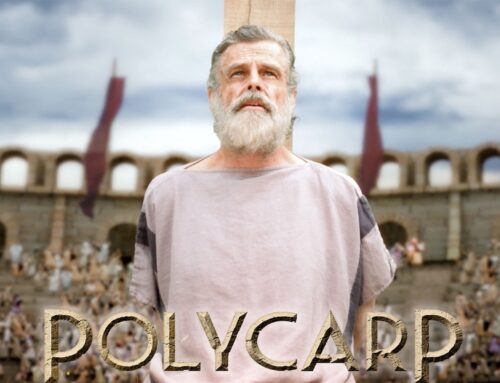
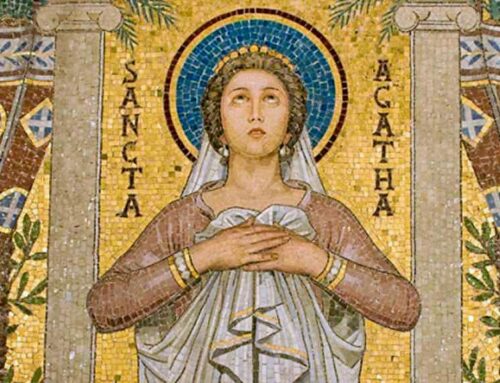
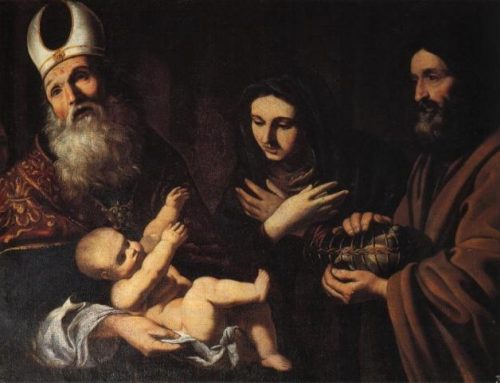
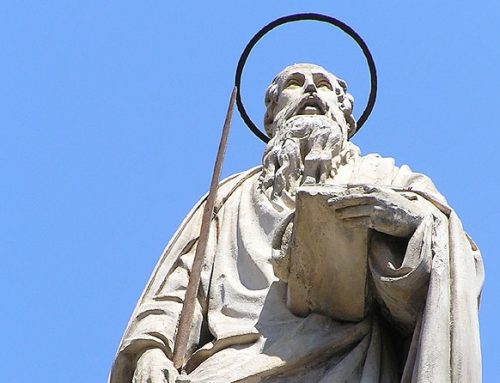
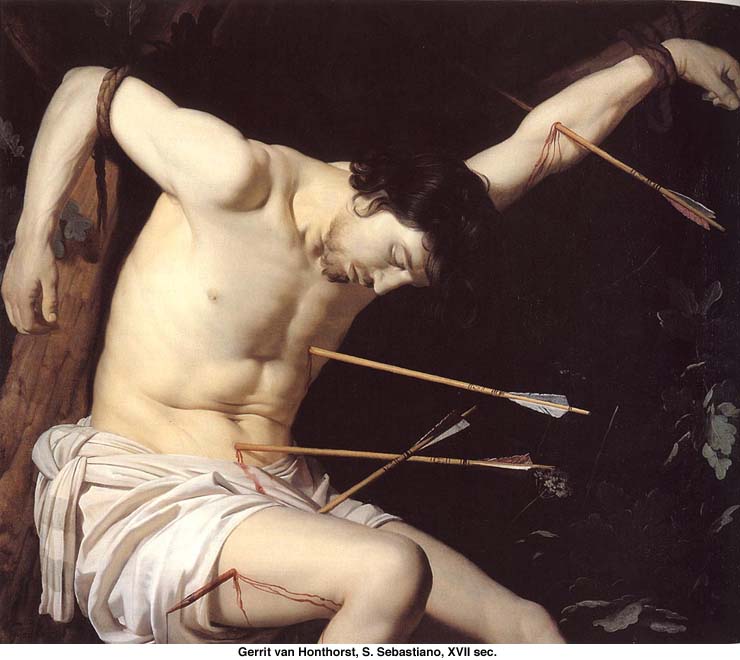
Leave A Comment
You must be logged in to post a comment.